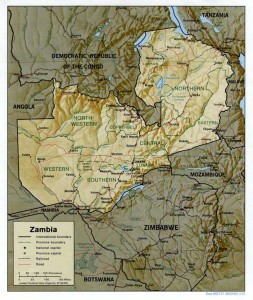- Zambia is a landlocked country in southern Africa, which mainly lies in the Zambezi River basin, and partially in the Congo River basin in the north.
- Between 2000 and 2007 Zambia experienced unusually unstable weather, with a sequence of two flood years, two drought years and two years with normal rainfall.
- Zambia’s surface water potential totals some 100 billionm3, with the Zambezi River contributing over 60% of the runoff. Consequently, as a major stakeholder in the Zambezi River Authority, along with Zimbabwe, Zambia is helping establish the Zambezi Watercourses Commission.
- Groundwater is also a major resource, especially during the dry season. Although no accurate assessment is available, the average renewable groundwater potential is estimated to be 49.6 billion m3.
- By far the largest user of water is hydropower generation. Of about 38.5 billion m3 of overall water withdrawal, 36.3 billion m3 is used to generate electricity for internal use and export to neighbouring countries. Some 70% of the country’s hydropower potential awaits development.
- In 2005, 86% of people living in towns had access to safe water, compared with only 37% in rural areas. For the same year, just 13% of the rural population had access to improved sanitation, whereas there was 41% coverage in urban areas.
The section “Did You Know…?” is taken from the 3rd World Water Development Report “Water in a Changing World“.


